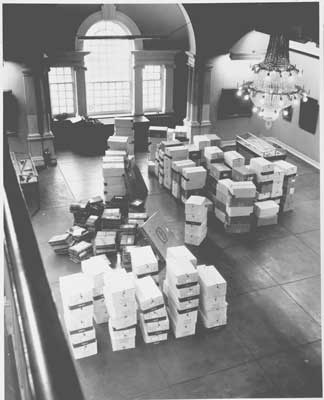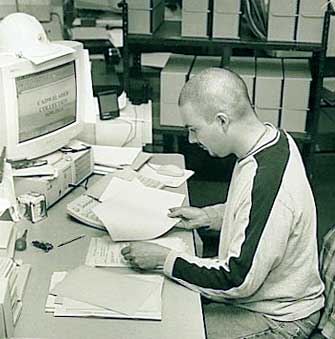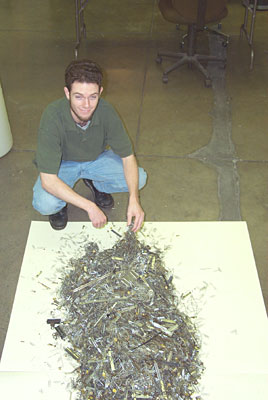 |
 |
Download the Coxe Family Mining Papers Finding Aid
|
The Coxe Family Mining Papers were donated to the Historical Society of Pennsylvania (HSP) by the Coxe family under an agreement dated December 15, 1967, though the collection remained in storage and unprocessed for over thirty years. In mid-1998, the Society received funds from the National Historical Publications and Records Commission (NHPRC) to process the three truckloads of materials. The NHPRC provided $77,873 for a two year processing project. HSP matched these funds, and received an additional grant from the Pennsylvania Historical and Museum Commission (PHMC) for $14,755 to process a discrete portion of the collection. Brett Reigh was named Project Archivist in July 1999 and began an initial survey of the boxes along with Carol Smith, who was hired to assist with the organization and work plan of the project. The survey identified over 350 bound volumes and roughly 400 linear feet of manuscript materials. The survey also uncovered mold in some of the files, which would become the most serious problem encountered during the processing of the papers. Patrick Shea was hired in September 1999 as an Archival Processor, and the processing began in earnest in early October. Including the bound volumes, the size of the collection would eventually grow to approximately 500 linear feet. The papers are organized into three record groups, papers of the Estate of Tench Coxe Files, the Coxe Mining Company Operations and the Coxe Family Papers. Basic preservation work was performed during processing, which included the removal of metal objects and rubber bands, as well as preservation photocopying. Early in the project it was decided to keep all the metal objects removed from the papers. This collection of paper clips, staples, binders and other assorted metal fasteners would weigh over sixty pounds after just a year and a half of work. |
Processing of all undamaged items was completed in June 2001. A finding aid and inventory were created, and the collection was opened to the public on August 1, 2001. Over the following months, the mold-damaged items will be cleaned and integrated into the collection. HSP has built a mold-cleaning room, at its own expense, to treat the damaged materials. The Conservation Center for Art and Historic Artifacts was consulted relative about cleaning and storing the mold-damaged items. Reigh and Shea will continue to clean these materials through December 31, 2001, when a revised finding aid and inventory will be completed. This collection contains materials of interest to scholars in various disciplines. Labor historians will find rich resources in the strike and labor-related files, which reveal the relationship between labor and capital within the Coxe mining companies. Business historians can use the long continuous runs of financial data, including ledgers and journals, to study the way the Coxe family conducted its day-to-day business, while those interested in the family itself will find numerous files related to various family members. There are extensive files relative to engineer and inventor Eckley B. Coxe, including personal correspondence and materials related to his various political activities. The land and real estate files trace the acquisition and development of the Coxe lands and historians of Pennsylvania and of coal mining more generally can use the whole collection to document one of the major independent anthracite coal mining operations in the United States. |


